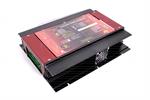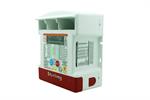Our truck came with a 150a 24VDC alternator. In addition to solar, generator, and shore power, I'd also like to be able to use the alternator to charge our house battery bank as we drive from one place to the next.
If I understand correctly, I can charge lithium batteries much faster than lead-acid types, at the rate of around 40% of their capacity. So if we go with a lithium house bank, that would give us a unique opportunity, as we'd have a lot of power available to charge the house bank, and a house bank capable of taking a lot of power quickly.
I've been looking at Sterling's web site, and the largest 24VDC to 12VDC charger I see, is 35 amps in and 70 amps out. If we had a 400Ah lithium house bank, 40% of that would be 160 amps, or almost twice what that charger is capable of.
Are there larger 24VDC to 12VDC chargers available?
Can I parallel multiple 24VDC to 12VDC chargers for more amperage?
If I understand correctly, I can charge lithium batteries much faster than lead-acid types, at the rate of around 40% of their capacity. So if we go with a lithium house bank, that would give us a unique opportunity, as we'd have a lot of power available to charge the house bank, and a house bank capable of taking a lot of power quickly.
I've been looking at Sterling's web site, and the largest 24VDC to 12VDC charger I see, is 35 amps in and 70 amps out. If we had a 400Ah lithium house bank, 40% of that would be 160 amps, or almost twice what that charger is capable of.
Are there larger 24VDC to 12VDC chargers available?
Can I parallel multiple 24VDC to 12VDC chargers for more amperage?
Last edited:


